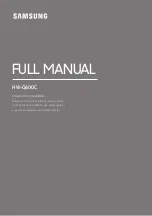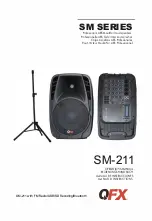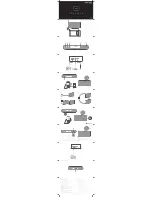
Electrostatic History 35
thought of insulating the stators to prevent the destructive effects
of arcing. By 1952, he had an electrostatic tweeter element
ready for commercial production. This new tweeter soon creat-
ed a sensation among American audio hobbyists. Since Janszen’s
tweeter element was limited to high frequency reproduction, it
often found itself used in conjunction with woofers—most nota-
bly, those from Acoustic Research. These systems were highly
regarded by all audio enthusiasts.
As good as these systems were, they would soon be surpassed by
another electrostatic speaker.
In 1955, Peter Walker published three
articles regarding electrostatic loudspeak-
er design in Wireless World, a British
magazine. In these articles, Walker dem-
onstrated the benefits of the electrostatic
loudspeaker. He explained that electro-
statics permit the use of diaphragms that
are low in mass, large in area and uni-
formly driven over their surfaces by electrostatic forces. Due
to these characteristics, electrostats have the inherent ability to
produce a wide bandwidth, flat frequency response with distor-
tion products being no greater than the electronics driving them.
By 1956, Walker backed up his articles by introducing a con-
sumer product, the now famous Quad ESL. This speaker
immediately set a standard of performance for the audio indus-
try due to its incredible accuracy. However, in actual use, the
Quad had a few problems. It could not be played very loud,
it had poor bass performance, it presented a difficult load that
some amplifiers did not like, its dispersion was very directional
and its power handling was limited to around 70 watts. As a
result, many people continued to use box speakers with cones.
In the early 1960’s Arthur Janszen joined forces with the KLH loud-
speaker company, and together they introduced the KLH 9. Due to
the large size of the KLH 9, it did not have as many sonic limitations
as the Quad. The KLH 9 could play markedly louder and lower in
frequency than the Quad ESL. Thus a rivalry was born.
Janszen continued to develop electrostatic designs. He
was instrumental in the design of the Koss Model One, the
Acoustech and the Dennesen speakers. Roger West, the chief
designer of the Janszen Corporation, became the president of
Sound Lab. When Janszen Corporation was sold, the RTR
loudspeaker company bought half of the production tooling.
This tooling was used to make the electrostatic panels for the
Servostatic, a hybrid electrostatic system that was Infinity’s first
speaker product. Other companies soon followed; each with
their own unique applications of the technology. These include
Acoustat, Audiostatic, Beverage, Dayton Wright, Sound Lab and
Stax, to name a few.
Electrostatic speakers have progressed and prospered because
they actually do what Peter Walker claimed they would. The
limitations and problems experienced in the past were not
inherent to the electrostatic concept. They were related to the
applications of these concepts.
Today, these limitations have been
resolved. Advancements in materi-
als due to the U.S. space program give
designers the ability to harness the superi-
ority of the electrostatic principle. Today’s
electrostats use advanced insulation tech-
niques or provide protection circuitry.
The poor dispersion properties of early
models have been addressed by using
delay lines, acoustical lenses, multiple panel arrays or, as in our
own products, by curving the diaphragm. Power handling and
sensitivity have also been increased.
These developments allow the consumer the opportunity to
own the highest performance loudspeaker products ever built.
It’s too bad Rice and Kellogg were never able to see just how far
the technology would be taken.
These developments allow
the consumer to own the
highest performance loud-
speaker products ever built.
English
Содержание Montis
Страница 1: ...M o n t i s u s e r s m a n u a l m a n u e l d e l u t i l i s a t e u r tm ...
Страница 15: ...15 x 4 x1 x4 ...
Страница 16: ...16 29Hz 23kHz 3dB 58 lbs 26 3kg 4 Ohms 91dB 2 83 V M ...
Страница 17: ...17 ...
Страница 18: ...18 ...
Страница 19: ...19 ...
Страница 20: ...20 20 500W ...
Страница 26: ...26 Placement English Figure 3 Flashlight toe in technique ...
Страница 47: ...Français Figure 3 Technique d orientation avec lampe de poche Positionnement 47 ...
Страница 63: ......
















































